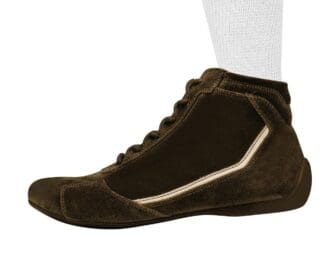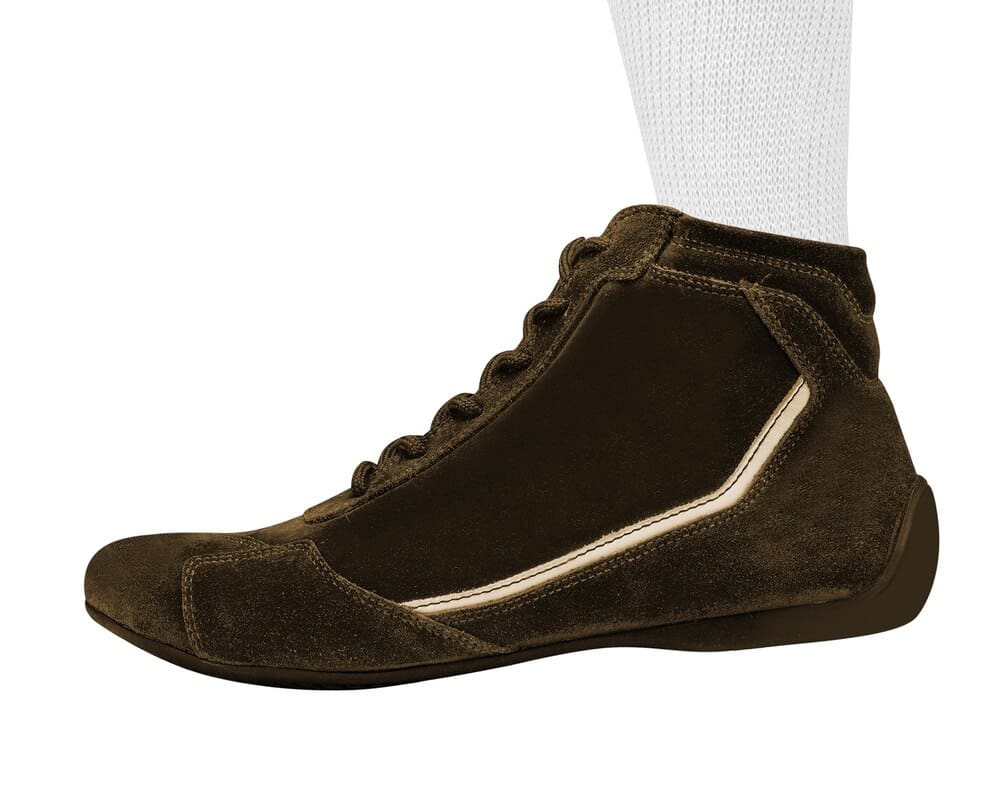For runners with flat feet, finding the right shoe is not just about comfort—it’s a critical step in preventing injury. Individuals with low or collapsed arches, a condition known as pes planus, often experience overpronation, where the foot rolls excessively inward upon landing. This biomechanical quirk can lead to a cascade of issues, from shin splints and plantar fasciitis to knee and hip pain. The solution lies in selecting a running shoe specifically designed for stability or motion control, which provides targeted support to guide the foot into a more neutral alignment, ensuring a safer and more comfortable run every time.
Understanding Flat Feet and Overpronation
To choose the right shoe, it’s essential to first understand the mechanics of your feet. Flat feet occur when the arches on the inside of your feet are flattened, allowing the entire sole of your foot to touch the floor when you stand up.
This condition can be congenital (present from birth) or acquired later in life due to injury, age, or stress on the feet. There are two main types: flexible flat feet, where an arch is visible when not bearing weight but disappears when standing, and rigid flat feet, where the arch is absent in all positions.
The primary concern for runners with flat feet is its strong correlation with overpronation. Pronation is the natural inward roll of the foot that occurs as it transitions from heel-strike to toe-off. This movement helps absorb shock, but in overpronation, the foot rolls too far inward, failing to properly stabilize the body.
This excessive motion places abnormal stress on the muscles and ligaments of the lower leg. Over time, this can contribute to a host of common running injuries, including Achilles tendonitis, shin splints, bunions, IT band syndrome, and runner’s knee.
What to Look for in a Running Shoe for Flat Feet
The running shoe market addresses overpronation with two main categories of footwear: stability and motion control. The one you need depends on the severity of your flat feet and degree of overpronation.
Stability vs. Motion Control
Stability shoes are the most common solution, designed for runners with mild to moderate overpronation. They offer a balance of cushioning, flexibility, and support. These shoes incorporate features that gently correct the foot’s alignment without feeling overly rigid or restrictive.
Motion control shoes are built for runners with severe overpronation or very flat, flexible feet. These are the most supportive shoes available, featuring robust technologies to limit excessive foot movement. They are typically heavier and more rigid than their stability counterparts, prioritizing maximum support over flexibility.
Key Features and Technology
When shopping, look for specific design elements that signal a shoe is built to counter overpronation. Understanding this terminology will empower you to make an informed choice.
A medial post is the traditional method for providing stability. This is a section of firmer, denser foam (often a different color) located on the inner side of the midsole. Its purpose is to compress less under pressure, thereby slowing the rate of inward roll.
A more modern approach is the use of guide rails, a technology popularized by brands like Brooks. Instead of a rigid post, guide rails act like bumpers for the foot. They engage only when needed to keep your knee and ankle moving within their natural motion path, offering a less intrusive form of support.
The heel counter is the small, often plastic, insert that wraps around the back of the shoe. In stability and motion control shoes, this component is firm and structured. It helps lock the heel in place, preventing side-to-side slippage and providing a secure foundation for each stride.
Finally, examine the shoe’s overall platform. A shoe with a wide, stable base, particularly through the midfoot and forefoot, offers more ground contact. This creates inherent stability, much like a wider wheelbase on a car makes it less likely to tip over.
How to Get the Right Fit
Even the most technologically advanced shoe will fail if it doesn’t fit properly. Your foot mechanics are unique, and finding the perfect match requires a bit of due diligence.
The Wet Test
A simple way to get a preliminary idea of your arch type is the “wet test.” After a shower, step onto a piece of cardboard or a dark towel and examine the footprint you leave behind. If you see the imprint of your entire foot, you likely have flat feet.
If you see about half of your arch, you have a neutral or normal arch. If you see only your heel, the ball of your foot, and a thin line connecting them, you have high arches and may supinate (roll outward).
Visiting a Specialty Running Store
While the wet test is a good starting point, nothing beats a professional gait analysis. At a specialty running store, trained staff will watch you walk and run, often on a treadmill, sometimes using video to slow down the motion. They can accurately assess your degree of pronation and recommend the appropriate category of shoe.
This expert guidance is invaluable, as it removes the guesswork and significantly increases your chances of finding a shoe that works in harmony with your body, not against it.
Sizing and Fit Tips
When trying on shoes, always follow a few best practices. Ensure there is about a thumb’s width of space between the end of your longest toe and the tip of the shoe to accommodate for foot swell and movement during a run.
Shop for shoes in the afternoon or evening, as your feet naturally swell throughout the day. Always wear the type of socks you typically run in to get an accurate sense of the fit. The shoe should feel snug and secure through the midfoot and heel, with no slipping, but allow your toes to wiggle freely.
Recommended Running Shoe Models for Flat Feet
While a personal fitting is paramount, several models have earned a reputation for excellence in providing support for flat-footed runners.
Top Stability Options (Moderate Overpronation)
- Brooks Adrenaline GTS: A perennial favorite, the Adrenaline uses Brooks’ innovative GuideRails system. It provides holistic support that guides the foot, ankle, and knee, making it a go-to workhorse for daily training.
- Hoka Arahi: Hoka is known for maximal cushioning, and the Arahi brings that signature comfort to a stability shoe. It features the J-Frame, a firmer foam that wraps around the heel and medial side to guide the foot without adding significant weight or stiffness.
- Saucony Guide: True to its name, the Guide offers a balanced and reliable ride. It combines a medial post with a comfortable midsole foam, providing noticeable support that feels smooth and unobtrusive on the run.
- New Balance Fresh Foam X 860: A classic stability shoe, the 860 features a traditional medial post for dependable support. Its Fresh Foam X midsole delivers a soft yet responsive ride, making it a durable option for high-mileage training.
Top Motion Control Options (Severe Overpronation)
- Brooks Beast / Ariel: The Beast (men’s) and Ariel (women’s) are the gold standard in motion control. They are built on a wide, straight platform with extended support systems to offer maximum stability for severe overpronators or heavier runners.
- ASICS Gel-Kayano: While often classified as a high-cushion stability shoe, the Gel-Kayano offers a level of support that borders on motion control. It’s an excellent choice for runners who need significant support but still want premium cushioning for long distances.
Beyond the Shoe: Other Considerations
The right shoes are your first line of defense, but a holistic approach can further improve your running experience and reduce injury risk.
The Role of Insoles and Orthotics
Over-the-counter insoles can provide an extra layer of arch support and cushioning. For those with significant biomechanical issues, a podiatrist may recommend custom orthotics, which are molded specifically to the contours of your feet to provide precise correction.
A word of caution: avoid adding a supportive insole to a motion control shoe without professional guidance. This can lead to over-correction, creating a new set of problems.
Strengthening and Stretching Exercises
Strengthening the muscles in your feet and lower legs can create a more stable foundation from within. Exercises like towel curls, marble pickups, and single-leg balances can improve foot strength and proprioception.
Additionally, runners who overpronate often have tight calf muscles and Achilles tendons. Incorporating regular calf stretches into your routine can improve ankle flexibility and promote a more efficient gait.
Ultimately, having flat feet does not mean you cannot enjoy a long and healthy running journey. By understanding your biomechanics and choosing a shoe with the appropriate stability or motion control features, you can mitigate injury risk and unlock new levels of comfort. A proper gait analysis is the surest path to finding your perfect pair, turning what was once a challenge into a well-supported stride toward your fitness goals.







